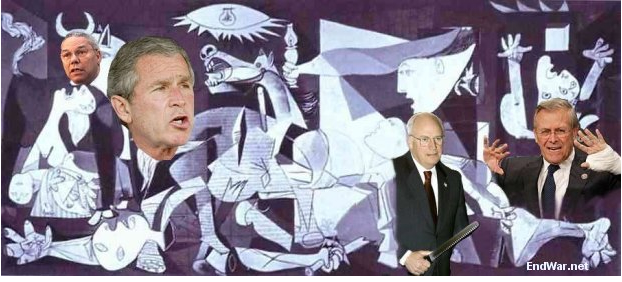Performing Life: Whose Pictures are Worth One Thousand Words?
Virginia Kuhn, University of Southern California’s School of Cinematic Arts
Enculturation 6.2 (2009): http://enculturation.net/6.2/kuhn
The art of the past no longer exists as it once did. Its authority is lost. In its place there is a language of images. What matters now is who uses that language for what purpose.
John Berger, Ways of Seeing
John Berger saw the advent of color photography as a technology that completely changed the way we view art, history, and culture. His seminal book, Ways of Seeing, remains relevant, particularly in these times of sweeping technological change. Innovations in digital technologies have rendered the language of images more accessible to more humans than ever before: Visual media saturates daily life, and Web 2.0 tools allow people to produce visual media. As such, universities should foster critical engagement with the image-rich media that inundate student fields of vision daily. This critical engagement requires disciplined analysis or the ability to “read” images as well as the ability to produce visual texts or “write” with them.
In 2003, I began requiring my students to create visual compositions since their awareness of the rhetorical and design decisions that go into producing visual texts is highlighted when they must make these choices themselves. Early on, however, the ends of such exercises remained elusive in terms of their social relevance and possibilities as public work. While students began to see themselves as producers of visual texts, capable of adding to the discourse rather than just passively consuming, they were less clear (as was I) about the relative impact such work might exert upon issues of social equity. It was not until I began teaching a class called Multicultural America, a course with a mandatory service learning requirement, and until I found appropriate tools for the creation of textual-visual projects, that I conceived of a way to wed the production of visual arrangements with political, social, or cultural intervention. Imagining text production for public audiences as service learning, my class produced visual-textual projects that challenged the status quo and sought to make racism visible in many senses of the word.
Over two semesters in 2004 and 2005, my students conducted a project in which they researched and documented the lives of two Milwaukee civil rights leaders, Lloyd Barbee and Marcia Coggs, both of whom died in 2004. Barbee is known as the “father” of the civil rights movement in Milwaukee; Coggs is known as the “conscience” of the Wisconsin state legislature. With their deaths came the realization that their lives were not documented in any systematic way, although this is certainly less true of Lloyd Barbee’s life. Since this work constituted the bulk of the service-learning requirement for the class, it both allowed and demanded my reconsideration of the boundaries of service learning as well as issues surrounding representation, textual and visual. Using a platform that allows average computer users to create electronic books that integrate text, image, video clips, sound, and hyperlinks, my students and I created multimedia tributes to these leaders and their work, presenting them to the inner-city community for whom our service learning was done. The following account serves as a case study through which I hope to suggest a form of digital activism and the steps needed to get there, for clearly this pedagogy requires scaffolding.
The Politics of the Image
In Visual Studies: A Skeptical Introduction, James Elkins notes that to date, Visual Studies has lacked a certain rigor. In part this is due to the field’s often-implicit reliance on Marxist theory, which is limited since it neglects to consider the larger structural change that Marx sought to effect. By way of example, Elkins narrates a typical classroom strategy whereby the teacher enacts a critical reading of a Calvin Klein advertisement, one meant to help students see through the subtle yet effective ways in which advertising hails individuals (68). For Elkins, the problem is that this exercise only takes the class so far and, quite simply, it is not far enough. There is no indication of why such work is ethically valid; students learn a very narrow lesson and while they may not be duped by Calvin Klein again, they will likely fall prey to a host of other advertisements. More profoundly however, this exercise leads to no concomitant behavioral change or action—there is no impulse to protest media depictions of women that might promote eating disorders, no call to boycott clothes made by sweatshop labor. The Marx agenda of unmasking false consciousness to see how desire is created was a structural one, while decoding a Calvin Klein ad becomes only an individual exercise. It is a superficial endeavor.
My initial forays into teaching with images were similarly politically anemic. When I began requiring the production of visual arrangements (rather than only their analysis), the only models I found to guide me in directing and assessing these projects were assignments aimed at a narrow type of visual argument. Technical writing books advised students to attract and keep an audience for one’s Web site through legibility and clarity of purpose. Although there is much to be said for audience awareness, clarity is not always a goal, particularly when trying to complicate simple understandings of naturalized issues such as race and the nuanced interplay of its structural forces. Likewise, the few rhetorical texts that included the creation of visuals tended to direct students to parody advertising for products like cigarettes and alcoholic beverages. By and large, students were then encouraged to use the language of advertising, even if they were using it against itself. Although there is some value to the numerous Captain Morgan Rum spoofs, they go no further than parody (was I only teaching them to argue better in a reductive attention-getting manner?), and they also languish in my desk drawer. I was looking to foster a more complex engagement, one that delves deeply into an examination of the power structures controlling modes of representation. I also wanted the resulting work to be more public in nature, to have some sort of impact on, and relationship to, the world. I needed a better model, a series of images that were in a multifaceted conversation with one another about some current issue.
I found a great visual-textual conversation that coalesced around Picasso’s Guernica, a painting memorializing the destruction of one of the oldest Basque towns during the Spanish Civil War. A tapestry reproduction of the painting hangs at the entrance to the UN Security Council. On February 5, 2003, Colin Powell appeared before the U.N. Security Council to make his case for attacking Saddam Hussein’s Iraq for possessing weapons of mass destruction (WMDs), and Guernica was covered by a blue drape, in front of which were placed U.N. Security Council flags. The official explanation was the blue background was technically better for camera coverage, but diplomats unofficially explained that it would be “a mixed message to have Powell recommend the invasion of Iraq against a backdrop of this scene of death and destruction” (Dowd 1). This staging by a presumably neutral governing body—the United Nations—suggests an acute understanding of the power of art, while it also demonstrates tight-fisted control over the field of representation—the simplified background “works” for the cameras and any message made before it stands uncontested. Whatever the reason for the draping, the result is that Picasso, an artist who was distinctly apolitical until Guernica, had his work effectively silenced at a particularly crucial moment in human history. Maureen Dowd editorialized the draping of Guernica in The New York Times and her “Powell without Picasso” piece was reproduced all over the internet. At Endwar.net, Dowd’s words were accompanied by a counter-image of Guernica, replete with Powell, George W. Bush, Dick Cheney, and Donald Rumsfeld posed within the landscape of the bombed city as shown here.
Image from EndWar.net
Although the Guernica draping seems to be an act in line with the dominant agenda, we might also see it as a radical act; Picasso’s piece is officially sanctioned by virtue of its very presence at the entrance of the U.N. Security Council, a place it has resided for a number of years, ever since Nelson Rockefeller donated it. It is important to recall that many nations were decidedly not supportive of the decision to attack Iraq, and Powell’s address did not create consensus. Indeed Laurie Brereton, an Australian parliamentary representative, critiqued the draping a month before Dowd’s editorial in “Shroud Over Guernica,” which appeared in The Sydney Morning Herald. The stranglehold exerted by the powers-that-be is more precarious than it appears at first glance, and the space for intervention—the gap for resistance—lies in these faltering moments. One such gap was filled by the politician-laden Guernica parody; it is a staged protest with wide dissemination at its core. Indeed, this image lingers at EndWar.net; it is linked from Lovearth.net and from numerous other websites. Moreover, the satire is far less compelling when considered outside of its context—although it might have some meaning on its own, the force of that meaning is far greater when considered as a reaction to the U.N.’s draping of Guernica. Its reactionary dimension places it within the social field of hegemony, and this is key when considering its existence as a digitally created work circulated via networked technologies. These treatments of Guernica are complex in content and in form: they recast past events in terms of the present; they move from traditional mass media to digital mass media; and they make use of new capabilities for representation and dissemination afforded by digital technologies. All of these features are pertinent to my pedagogical plan, and the whole exchange is emblematic of the sort of complex critical practices I hope to cultivate in the classroom.
Multimedia and Multiculturalism
Since most of my students have been raised in racially segregated communities, a close examination of structural racism is necessary but also has the potential for creating much tension in the classroom. As Allen Johnson notes, “most people have an immediate negative reaction to works like racism, sexism or privilege. They don’t want to look at what the words point to” (12). White students often feel defensive and guilty. Students of color are sometimes looked to for insider reporting in a way that is essentializing, insulting, and often embarrassing. One way to move through this initial discomfort and to render the inevitable tension more productive is to begin with an example like the Guernica draping and parody. By looking at the two acts as semiotic events, we can more easily discuss the rhetoric of each, including the impact each exerts on public discourse. We can also look at context, note structural power differentials, and discuss the fact that just as current opinion varies with regard to the war in Iraq, war is often met with public disapproval, as Guernica’s creation asserts. Indeed, many Americans were as involved with the Spanish Civil War as they were with the war in Vietnam (Oppler 50). We can discuss Hemingway’s For Whom the Bell Tolls, a response to the Spanish Civil War, and note how artists intervene in political issues and how their work can be subject to controversy. A complex reading of the parody would, for instance, note that the U.S. leaders are posed among the victims of the carnage of Guernica. Donald Rumsfeld’s flailing arms, for example, echo another (nearby) injured figure’s posture. On the other hand, Powell’s face is laid over that of a dying bull and given Spanish respect for bulls, one may not see this as an insult; however, Powell’s face is positioned such that the bull’s horns lay directly on top of his head. The resemblance to a devil is hard to ignore. This type of analysis of images is necessary to both visual and cultural literacy, but it must go further in terms of political awareness.
In his excellent argument for the inclusion of a general education requirement for visual multiculturalism in undergraduate curricula since “visual-optical-pictorial experiences are significant and pervasive in modern social life,” William Washabaugh reviews the rich body of literature, work which convincingly demonstrates the contemporary “abundance of visual experience” and its “sublimity, its paradoxical invisibility and specious familiarity, its inescapability, its skewed distribution among social classes, its complicity with systematics, and its centrality in the complex knot of aesthetic-political-economic-psychological experiences” (1). The material consequences of visual forms of representation are often difficult for students to fathom in any type of critical manner, particularly given the “paradoxical invisibility and specious familiarity” of visual experiences. Indeed students often regard themselves as quite savvy consumers of messages in advertising, even as they do not seem to see much below the surface of an ad’s image or think about the aggregate effect of these images that circulate in the culture. Similarly, they often fail to see the mediated nature of visual messages as mass media becomes increasingly transparent through its sheer inundation in contemporary life. It is only through careful analysis, followed by actual deployment of the language of images, that students become adept at grasping the larger implications of visual representations. This sustained study of visuals, according to Washabaugh, helps students “understand and intervene in visual aesthetics and the construction of race and gender.” This is, indeed, a goal of the multicultural classroom.
Reading and Writing Images as Cultural Constructs
An analysis of Guernica will not immediately show students why it is that they ought to be concerned with such images or how they might intervene even if they wished to. It is crucial that students see themselves as firmly within the system and come to the realization that inaction can perpetuate systems of inequity. This sort of deeper experience of one’s place in the world often registers on an emotional level rather than a logical one. Images function in similar ways. As Robert Ray argues, images appeal to our emotions, allowing us access to a certain affect that is simply not reachable by other means. Ray suggests that the French Impressionists regarded art and cinema not as argument but as a “vehicle of revelation, and the knowledge revealed was not always expressible in words” (3). Since this affective quality lacks objective criteria for explanation, it often leads language-based scholars to dismiss the effect of images as the stuff of fetishism and idolatry, as has been noted by W.J.T. Mitchell among others. Perhaps this is why the study of images has been somewhat ineffectual in terms of Marxist structural change.
To get to this more affective dimension, I ask students to list the identity groups to which they belong, both those that are voluntary—groups around hobbies for instance—and those which are typically not chosen—gender, race. This exercise can help to define their relative privilege in society and reveals their affiliations to be more diverse than they might initially seem.
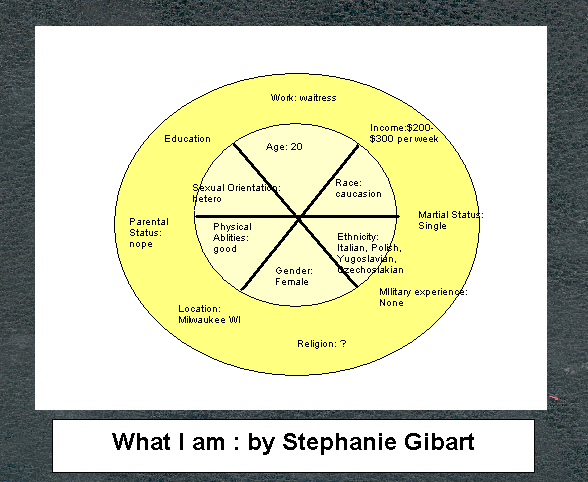
It also gives us larger categories than individuals to consider, and this helps to defer the type of personal confessions that can shut down conversations. Students then look at media representations of members of their various groups. The stereotypes students find often make them begin to question their own representations, and, by extension, those of other groups. They begin to see that issues like racism are structural in nature, rather than a matter of individual preferences or beliefs.
Their first visual-verbal assignment allows them to represent themselves as they are, not as they are assumed to be. Using TK3 (which is now Sophie), an open source multimedia-authoring platform, students are easily able to add pictures of themselves and their family and friends and then compare these images, side-by-side, to those they find in the media.
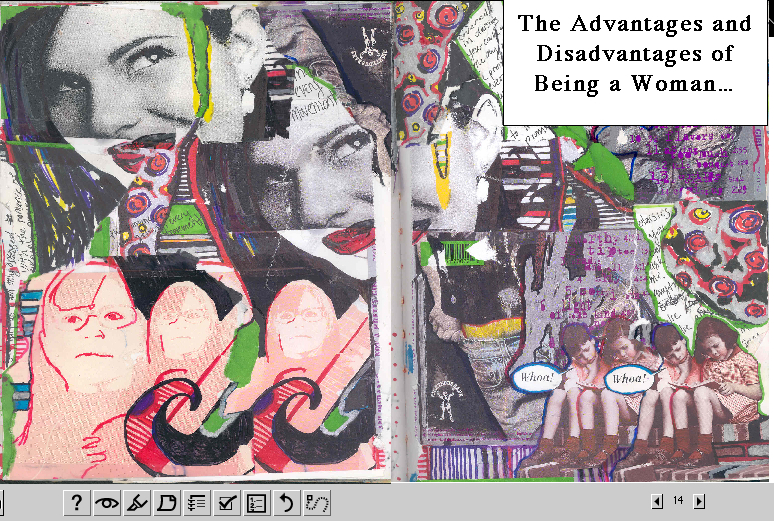
In this way, students can impact their own depictions, both visually and textually, and the means to affect the field of representation by members of marginalized groups cannot be overstated. bell hooks makes this point vividly when she explains that:
All colonized and subjugated people who, by way of resistance, create an oppositional sub-culture within the framework of domination recognize that the field of representation (how we see ourselves, how others see us) is a site of ongoing struggle.
The history of black liberation movements in the United States could be characterized as a struggle over images as much as it has also been a struggle for rights, for equal access. To many reformist black civil rights activists, who believed that desegregation would offer the humanizing context that would challenge and change white supremacy, the issue of representation—control over images—was never as important as equal access. As time progressed and the face of white supremacy has not changed, reformist and radical blacks would likely agree that the field of representation remains a crucial site of struggle, as important as the question of equal access, if not more important. (Art on My Mind 54)
In a culture that is saturated with dominant media depictions, the ability to produce counter-hegemonic imagistic discourse is key. It was this realization that led me to conceive of the multimedia documentation of the life and work of Lloyd Barbee and Marcia Coggs as a valid avenue for the service-learning requirement. Image analysis can be enhanced when one has the means to produce images—to use the language of images—rather than only talking about them. After spending eight hours working with an inner-city restoration group, students’ service work was to research these leaders’ lives, a job that included interviewing the families of both Coggs and Barbee.
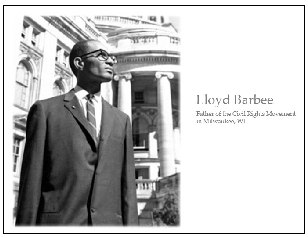
The multimedia projects created were then presented to the inner-city group we were serving and housed at the computer room of the community center for the purposes of education of local youth as well as expansion by residents.
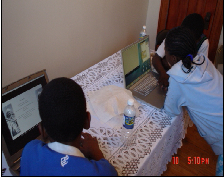
My students began to see the weight of their mission and, understanding the public nature of the work, they saw the onus for fair and accurate representation of the “other,” as well as the need to appreciate and depict the larger power structures central to both Coggs’s and Barbee’s work.
Technology as Tool
The concept of representing Coggs’s and Barbee’s lives required a great deal of care and forethought; however, the tool we used was also an integral part of the plan, and we could not have done the project without it. Digital technologies increase the possibility for impacting representation in ways that both reinforce but also call into question hegemonic systems. The initial hype about the egalitarian nature of the internet notwithstanding—indeed this notion is one that has long since been debunked—emergent technologies impact the semiotic field of play in important ways. The internet offers the means for circulating resistant images such as the Guernica example, even as mainstream media is ever more monopolized, but digital technologies also allow for the production and alteration of images—for self-representation as well as for representing the interests of groups who have had no voice until now. We are living in an age of heavily flooded mediated signs, that which Jean Baudrillard famously termed simulacra, and this also renders the system vulnerable to semiotic utterances for a more socially and politically just system. What has been lacking is an appropriate tool that allows users to create image-based texts with little technical prowess. From a current perspective, it is perhaps hard to recall the dearth of applications for multimedia authoring in a pre-Web 2.0 world, and although video and blogging platforms allow numerous opportunities for producing text with still and moving images, I believe most of these tools still lack the functionality for scholarly multimedia. I also believe it is incumbent upon academics to use and help shape the tools for such scholarship. Therefore, as TK3 evolved into Sophie, I have continued to test it, use it ,and offer feedback to its developers. In the interests of full disclosure, I should mention that Sophie is based at the University of Southern California, as am I. However, I was also using it long before this was the case.
I discovered TK3 when Bob Stein, its creator, gave the keynote at the 2003 Computers and Writing Conference at Purdue University. I was keenly interested in its pedagogical possibilities since it promised to allow all students, regardless of their technological abilities, to create digital texts. TK3 seemed an alternative to web page construction, and given that I could not count on students’ ability to know HTML—indeed there is no baseline for students’ technological proficiency—and being that I did not want, nor did I have the time and expertise, to teach programming.
Because TK3 retains the book metaphor (while not being a slave to it), it does not sacrifice print literacy for bells and whistles. Unlike PowerPoint, for instance, there is no limit to the amount of text that fits on a screen or page. As a result, an author is not encouraged to reduce complex ideas into those bullet points so commonly found on PowerPoint slides. In addition, images may either be added into the “stream" of the text, anchored between words and moving with them, or they can be added independently with the text wrapping around them. This latter feature adds visual elegance to the page even as it allows for more complexity in the relationship between text and image. One can teach print and visual literacy in a contrastive way, using word and image to inform each other and to highlight the potentials and limitations of each as semiotic systems. The text-friendliness is crucial for those of us who do not wish to sacrifice print literacy even as we endeavor to enhance it with other forms of expression afforded by digital technologies. Sophie retains these benefits of TK3, with the addition of timelines typically seen in video editing programs as well as opportunities for real-time commenting and networked components. Perhaps what is more attractive is that Sophie is free and open source, developed specifically for academic work. Moreover, Sophie 2.0, due in fall 2009, will include a web-based reader (for online access) while retaining a client-based authoring tool (for sophisticated functionality). It remains then, my platform of choice.
But how does one actually direct students to create visual-verbal texts? Finding models and analyzing them is a good start. In the Guernica with Colin Powell et al examples, students might use image-editing software to move the figures around in order to enhance the meaning of the whole. But, like James Elkins, Kevin Deluca notes the disciplinary trend of neglecting to read images closely. Citing numerous examples of visual criticism, Deluca shows how scholars of visual rhetoric do one of two things: they use the standards of verbal language to discuss pictures, or they reduce the picture to its captions. Likewise in recent social movement theory, the image is treated like a spectacle that merely calls attention to more serious deliberation that will follow in verbal language. Deluca notes that although it is “possible to study television and other image-dominated media by focusing on the words, why bother?” (19). One reason for the lack of attention to reading images may lie in the fact that they are hard to reproduce in books and journals, making their discussion more difficult. Color printing is cost prohibitive, black and white reproductions often fail to capture an image adequately, and there are normally fees to be paid for image reproduction permissions. The difficulty in producing images means that we must use words to talk about them; we cannot address them on their own terms. However, there is a deeper issue involved with reading images. As Gunther Kress maintains, in a culture informed by the dominance of verbal language, “meaning” is actually identified with “meaning in language,” and this fact constitutes “a major impediment to an understanding of the semiotic potentials of, among other modes, the visual and of its role in cognition, representation, and communication” (86). Is our ability to see the potential of images handicapped by our strong faith in the superiority of language?
If the study of images is less than ubiquitous, methods for constructing works with images for scholarly purposes are even more rare. While the area of technical writing and communication offers some models for document design, there is little precedent for handling an artistic representation, for instance. Although the scholarship of cultural studies tends to read images as cultural constructs, there is little emphasis on their actual construction. Only recently are composition textbooks looking at radical use of cultural images, directing students to create Adbuster-like arrangements that serve as anti-advertising. Still, I doubt many classes are prepared to teach the finer points of Guernica reproduced with politicians and have students produce their own as a mode of critique.
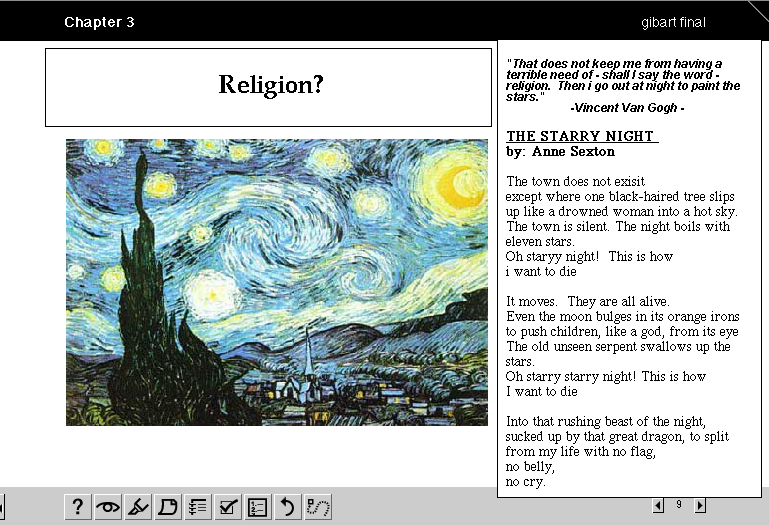
The relationship between the pictures used and the knowledge conveyed is addressed by Craig Stroupe when he enumerates the ways in which image and word work together. Stroupe argues that while some images merely reinforce or illustrate the text they accompany, to be “elaborate” (a term for his model of sophisticated verbal-visual text), the images ought to illuminate the corresponding text—they should add something, call the words into question, complicate the passage. To begin to see how this might work, the “texts” that we read in class must be similarly complicated, whether they are still images, images with words, or films. This work is crucial both for students’ own reflective potential as well as for them to understand that critical multiculturalism is not a matter of simply dismissing all white male authors and accepting, unquestioningly, all minority authors or those speaking out against the status quo. I try to leave my own responses even-handed such that students can see the complexity of the issues and assume a position, so long as they can support it. Students have to feel free to take issue with any and all texts in my class—to remain skeptical, as it were—in order for them to be critical consumers of cultural texts.
To that end, one of our course texts was a film by Jane Elliott, a woman who, in 1968, after the assassination of Dr. Martin Luther King, Jr., began experimenting with discrimination based on eye color with her Christian, white, third-grade pupils; she granted brown-eyed students special privileges, telling the blue-eyed students they were lazy, unmotivated, and dull-witted; these students, of course, sunk to that level and began producing down to meet low expectations. Following this exercise, Elliott began taking her act on the road, working in corporate settings, tagging the blue-eyed people in a similar way while encouraging the brown-eyed white people and the people of color to treat them the way that people of color are typically treated in our society.
I showed a film version of these exercises in class and, although there was little criticism of Elliott in class, the online discussion board revealed some mixed reactions. Indeed the following white student's post adds weight to this theory when she responds to one of her peer’s critique of Elliott by saying:
To be completely honest I never really gave much thought as to how racism really affected people. I was never brought up to see a difference in color of people, but I realize that many people are. There are so many extremely racist people in the world. It just seems kind of silly to me to have such hatred towards a person of another color. Skin is just skin and it in no way should determine who a person is. Unfortunately in the world we live in today it does. I am not sure if I thought what Jane Elliot did was a good thing. I do know that the video caught my attention and made me get upset. I feel badly that her children had to grow up and have to deal with her and the effects of her actions. I think it was wrong of her to put her children in a compromising situation and I do not agree with what she did on that note. I do however feel that she thought that what she was doing was the best decision at the time and hopefully didn't mess up her children.
This student was clearly upset by the video, and yet she goes on to note the ways in which she agrees that racism is rampant and unjust if she does quite see her own participation in the system. She does, however, begin to note that she is upset by the video and is not completely sure why. This is quite a teachable moment and yet, I am fairly sure, one that would not have taken place in the confines of our classroom, at least not without a good deal of prodding from me. I think the student simply felt freer to express her anger in an online environment where she could be heard and, perhaps more importantly, where she would not feel like a “flaming racist” as another white student called it during the next class period when describing her reluctance to speak in the last class. The digital post raised the issue that then could be broached face-to-face, and this led to a discussion of individual versus structural oppression.
I think it incumbent upon teachers to provide critiques of the texts they use in classes if they want to encourage real engagement with any texts. These course texts are granted institutional authority to a degree, if only by virtue of their appearance on our syllabi. So, for example, my alternate plan for engaging students in a critique of Jane Elliott’s work was to have students read Ingrid Erickson’s “Fighting Fire with Fire: Jane Elliott’s Antiracist Pedagogy.” Erickson notes that Elliott’s work has been widely used in teacher training and that its basic premise is that racism is created and, as such, it can be destroyed. However, Erickson also notes the paradox implicit in this form of pedagogy since Elliott “models the behavior she hopes to eliminate, challenges privilege using the tools that have been traditionally used by those in power, and in general employs a range of pedagogical methods many progressive educators would shun” (146). By noting the contradictions in some anti-racist solutions, I hope to help students enact the sort of sustained analysis of scholarship that I expect them to exert in their own work. My point here is that if we wish to take the unmasking of seemingly natural cultural forces like racism, classism, and sexism to gain a fuller world perspective, then we must engage alternate forms of expression for students to the extent they allow for a more rigorous engagement with the images we provide our students.
Image and Vision
In terms of guiding the construction of images, we needed to look not only at what was there but what was absent in the pictures circulating in the public realm. My class was examining the recorded images—from newspapers, and broadcast television—of civil rights leaders and wondered which leaders were seen as worthy of documenting; for instance, while we found numerous photographs and news stories about Lloyd Barbee, the attorney who filed the desegregation suit against the Milwaukee Public Schools, we found very few of Marcia Coggs, the first black woman to be elected as state representative in Milwaukee’s political body. One student, while conducting research during the second term in which I taught his class with this same project, performed a Google search and “Virginia Kuhn’s Multicultural America class” was among the top five results (in July, 2005, it was among the top 10; in 2009, it is eclipsed by Marcia Coggs-Jones, a politician following in her mother’s footsteps). One might argue that this is simply a case of the larger political move being more recorded; however, there are many pictures of Isaac Coggs, Marcia’s husband, and it is at this point the previous argument breaks down since, while Isaac Coggs was undoubtedly an excellent presence in Milwaukee politics, he certainly set fewer precedents than did his wife. One has to then consider the impact of patriarchal life on modes of representation when addressing this subject and one needs little in the way of visual argument to make that particular case.
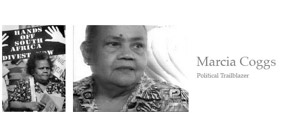
To this end, as a class, we felt the need to pay close attention to Marcia Coggs in order to exert some recuperative force in our work. Indeed we had already made Coggs more visible to a Google search.
We must look past generic boundaries that separate artistic forms of representation from critical forms, such as documentary, if it is to acquire sufficient rigor. As the Guernica example shows, art is often political in nature, and to pretend otherwise is simply incomplete scholarship. More profoundly, however, the distinction between art and documentary, between fact and fiction, as it were, presupposes that there exists the possibility of capturing some sort of unmediated reality through photography or film. This is a dangerous assumption indeed and, I would argue, there is no such thing as an unmediated image. As Punyashloke Mishra points out, seeing is not universal, so, for instance:
[T]he experienced physician, mechanic, or physiologist looking at a wound, an engine, or a microscopic preparation “sees” things the novice does not see. If both experts and laymen (sic) were asked to make exact copies of what they see, their drawings would be quite different. (182)
Not only do people see things differently, so does the camera. The role of framing and capturing of sections of an image (citing it, if you will), in photography, whether still or moving, along with the use of image editing, should be explicitly addressed in the classroom. Before students create any sort of visual arrangement, I have them view and read John Berger’s Ways of Seeing. The book was based on the BBC television series of the same name, and although many visual studies classes seem to read Berger, few have ever seen the television series. Berger shows the way that European oil painting helped to reinforce the values of the dominant class as advertising does today. He also convincingly shows how color photography, which allows liberal reproduction, has forever changed our view of ancient art. And though such reproduction makes art more accessible, Berger argues that historians and critics do their best to mystify art. Likewise, I would argue, digital capability for image editing forever changes our view of photography; the ability to add a digital Donald Rumsfeld to a computerized Guernica, is unprecedented. However, we must not leave such experimentation with images to the experts if we are interested in widespread literacy and social equity. Thus, Berger’s work is also important in terms of form. While it is not unusual to see books made into films, it is decidedly less common to have a television series made into a book. The mode of translation between the two media can be instructive for students accustomed to writing essays for their college classes.
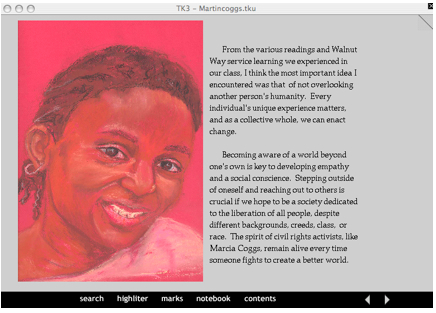
The pixel has made visible the fact that word and image are comprised of the same base materials, so when my students create their multimedia tributes to Coggs and Barbee, I caution them to use images and text carefully, deliberately, but also boldly. This led one student to create original artwork that we scanned in to add to the class project. Seeing the way that her drawing translated into a jpeg computer image caused her to take a new look at her self-portraits in her final project, where she segmented them and otherwise considered the ways in which she might dissect her sense of herself based on advertising targeted at women’s bodies. The resulting final project was really quite spectacular, as was her contribution to the larger group project.
After a great deal of research and experimentation with form, students each created one chapter on either Coggs or Barbee, which I then combined into one book. The two resulting books were presented to the community in a public ceremony that took place at the end of the year. Each of my students, many neighborhood residents, and local dignitaries gathered for this event, where we had several copies of each electronic book set up in the community center. One student reflected on the experience of the class noting that:
But what really made me appreciate the work our class did was when the class showed our contributions to the community of Walnut Way. I feel proud to be part of something that will have a lasting affect [sic] on not only their community but also the city of Milwaukee. The lessons I learned and the memories of this class are something that I will take with me for the rest of my life.
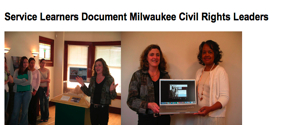
A record of this event lingers on University of Wisconsin, Milwaukee’s Cultures & Communities site where it encounters a good deal of traffic. Indeed, programs such as this recently earned the Cultures & Communities group a major Ford Foundation grant to continue work toward cultural pluralism and academic freedom. The projects produced in this class constitute an expanded notion of the study of images—one that includes the production of images, particularly those that oppose the stereotypical mainstream images that circulate widely in the culture. These digital images both initiate and demonstrate civic engagement.
Works Cited
DeLuca, Kevin. Image Politics: The New Rhetoric of Environmental Activism. New York: Guilford Press, 1999.
DeLuca, Kevin and John Delicath. Image Events, the Public Sphere, and Argumentative Practice.
Dowd, Maureen. “Powell without Picasso,” The New York Times. 5 Feb 2003: http://www.nytimes.com/2003/02/05/opinion/05DOWD.html?scp=2&sq=powell%20without%20picasso&st=cse
Erickson, Ingrid. “Fighting Fire with Fire: Jane Elliott’s Anti-Racist Pedagogy.” Democratic Dialogue in Education: Troubling Speech, Disturbing Silence. Ed. Megan Boler. New York: Peter Lang Publishing, 2004.
Guernica: http://www.pbs.org/treasuresoftheworld/guernica/gmain.html
hooks, bell. Art on My Mind: Visual Politics. New York: New Press, 1995.
Johnson, Allen. Power, Privilege and Difference. Boston: McGraw Hill, 2001.
Mishra, Punyashloke. Visual Rhetoric in a Digital Age. Boston: Bedford St. Martins, 2003.
Oppler, Ellen, ed. Picasso’s Guernica. New York: WW Norton & Company, 1988.
Prosser, Jon, ed. Image-Based Research: A Sourcebook for Qualitative Researchers. New York: Routledge, 1998.
Stroupe, Craig. “Visualizing English: Recognizing the Hybrid Literacy of Visual and Verbal Authorship on the Web." College English May 2000. Reprinted in Visual Rhetoric in a Digital World: A Critical Sourcebook. Ed. Carolyn Handa. Boston: Bedford/St. Martin's, 2004: 13-37.
Washabaugh, William. “Visual Multiculturalism.” Paper given at the International Association of Visual Literacy Conference, 2003.
